In late March 2017 I, and many of Australia’s horticultural media, landscape designers, landscapers, horticulturists and garden lovers, made our annual pilgrimage of to the autumn Melbourne International Flower and Garden Show (MIFGS). With nine big display gardens, five boutique gardens and 12 small student-built achievable gardens on show, I was eager to see what was on offer at MIFGS in 2017 and who had won what.
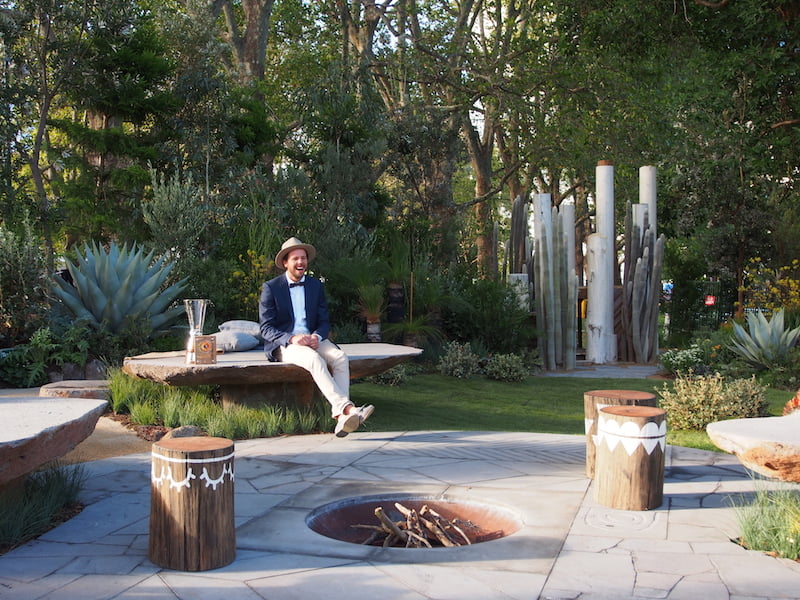
I See Wild, design Phillip Withers Landscape Design, Gold Medal and Best in Show MIFGS 2017
Although many dismiss garden shows as ‘catwalk fashion’ and irrelevant to what people are actually doing in their gardens, I beg to differ. Having visited MIFGS for many years now, I know that trends are very obvious and will repeat themselves in client requests and general landscape design for several years after, whether it’s the Year of the Fire Pit, the Year of the Timber Deck, the Year of Bluestone Paving, or the Year(s) of the Outdoor Kitchen (yes it did go on for an unfortunately long time).
For the past few years, MIFGS has been a real treat. I’ve been wowed over and over – not just by brilliant design, high-quality construction and exquisite planting but by something else, something that excites and inspires.
In 2017, despite there being some very fine gardens on show, it all felt a little ho-hum.
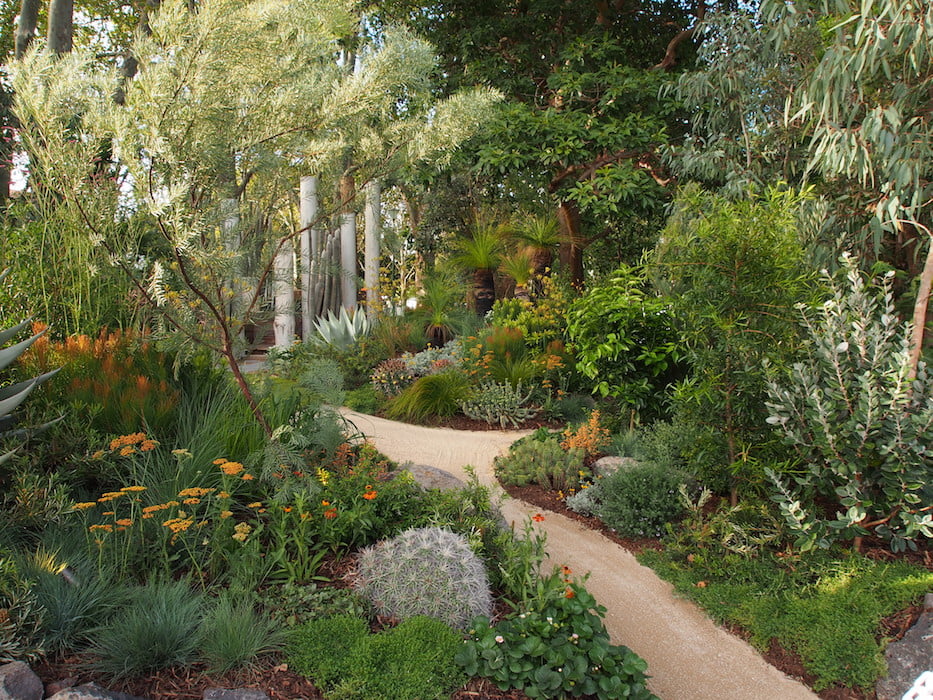
I See Wild, design Phillip Withers Landscape Design, Gold Medal and Best in Show MIFGS 2017
Phillip Withers’ wonderful Gold Medal-winning garden was certainly an exception, showing a new design maturity and restraint in its layout, colour palette and planting. Paradoxically called ‘I See Wild‘, it was a standout garden for both Phillip and MIFGS 2017, winning the only Gold Medal awarded in the Show Garden category and also Best in Show. Bold textural contrasts were allowed to take centre-stage in a mainly charcoal, sand and green-on-green garden highlighted with subdued spots of rusty yellows, burnt orange and silver grey.
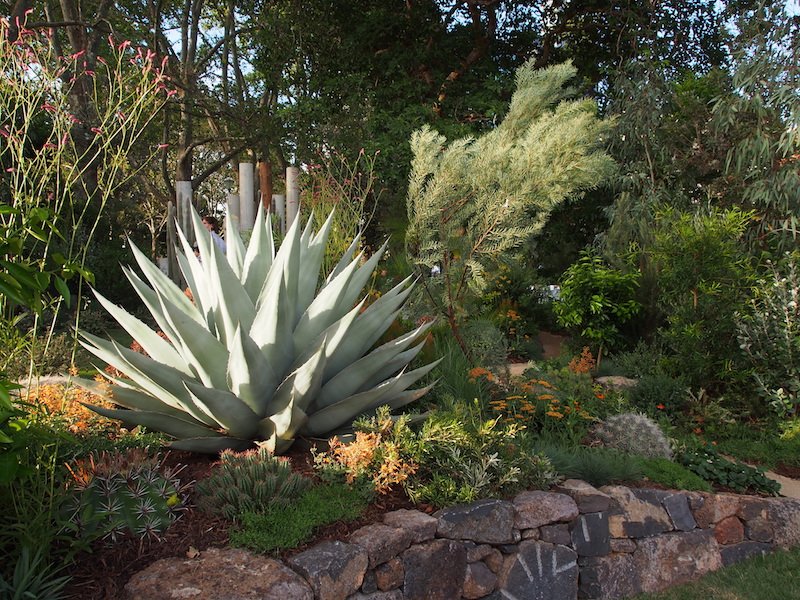
I See Wild, design Phillip Withers Landscape Design, Gold Medal and Best in Show MIFGS 2017
Gratifyingly, despite this new restraint, Phillip’s ability to put together surprising and delightfully eclectic combinations of plants was still everywhere – succulents nestling beside nasturtiums, Achillea dancing around under the rangy wattle, and giant spiny grey agaves bursting out of a bank of kangaroo paw, banksia, rice flower, Eryngium and orange Echinacea. Phillip breaks planting rules with an assurance and style I’ve not seen in any other designer. And the way those tan stems on the repeated Correa alba drew those pictures together…well! I suspect you just had to see it ‘in the flesh’ to really appreciate what he had made. His uncanny ability to make such alluring plant pictures with seemingly disparate plants is complemented by understanding that while the plants draw the eye, the shapes and proportions of the three-dimensional voids in a garden are what makes it truly great. I loved the use of levels, like sunken enclosure of the zoysia lawn, and the detail in the paving was just beautiful.
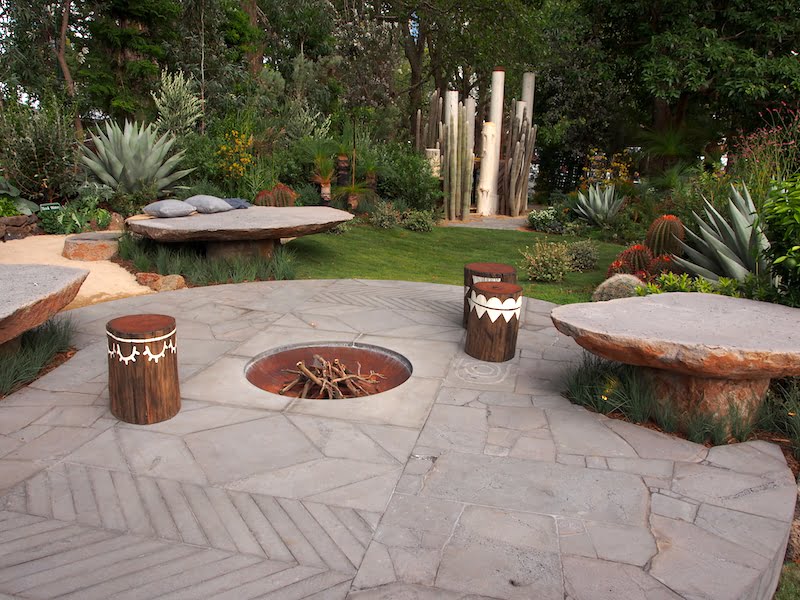
I See Wild, design Phillip Withers Landscape Design, Gold Medal and Best in Show MIFGS 2017
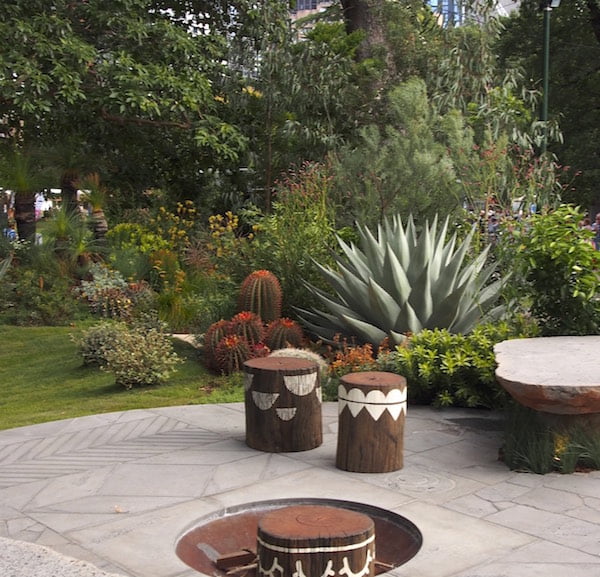
I See Wild, design Phillip Withers Landscape Design, Gold Medal and Best in Show MIFGS 2017
So there we have the only Gold Medal winning show garden at MIFGS 2017. Appropriate and fair? Or perplexing and unfair?
There have been lots of legitimate complaints in recent years about the MIFGS judging and this year was no exception. In previous years I have seen a gold medal awarded to a garden that didn’t meet all the eligibility criteria as it was not possible to see all the garden when standing in front of it. I, and many others, have also questioned a Best in Show choice when there was another much more obvious winner. There have been judges who really should have stood aside because of apprehended bias (for a full explanation of what that legal term means, click HERE). Those who complain or question (which, of course, often happens when tempers are frayed in the heat of the moment) can find out they’ve done their last MIFGS garden, one of the reasons that MIFGS 2017 was missing several outstanding and experienced designers.
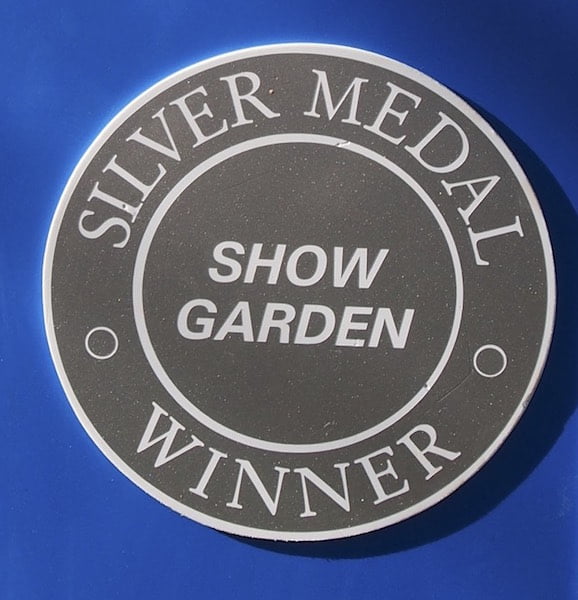
MIFGS 2017 had a new panel of judges who chose to only award one gold, a few silver and bronze and, for some gardens, no medal at all. Perhaps that’s a necessary correction to the excess of medals, some undeserved, awarded in previous years. But there are still major structural problems with the judging that need to be addressed.
MIFGS judges gardens in a most unusual way when compared to other ‘international’ garden shows and this has troubled me for several years. At the Chelsea Flower Show, as Best in Show winner in 2013 Phillip Johnson will attest, the brief is everything. The designer submits a brief – a description of the why, what and how of the garden, and then is judged on how well the garden meets the brief. The designer is allowed to make a short presentation to the judges to explain the garden and how it meets the brief, detailing any changes from the original, and then leaves them to it.
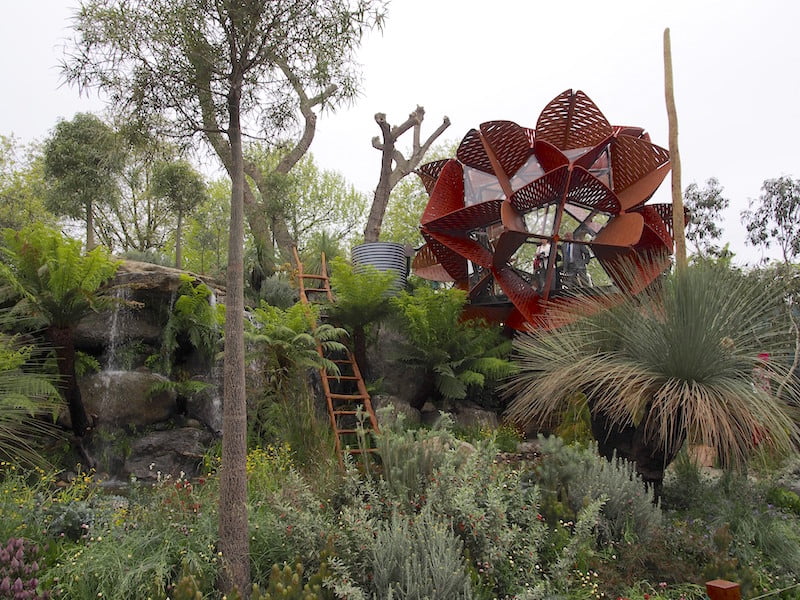
THAT GARDEN – Design Phillip Johnson. Chelsea Flower Show 2013 Best in Show
Being judged against a brief is essential as this is what real-life landscape designing is all about. I’ve known excellent and skilled designers who did design jobs that were total failures, not because they were bad gardens but because they were not what the client needed or wanted. The recently aired TV series Dream Gardens is an excellent example of how the brief is king. Despite the anguish of the plant fanatics who think a real garden doesn’t have a pool, cabana, kitchen or water feature anywhere in it, the best garden for a designer’s clients is the one that they want.
But not so at MIFGS. In fact when you speak to the landscape designers who exhibit gardens there, the lack of any clear understanding about why some gardens get medals and others don’t is really disheartening. That’s absolutely not the fault of the judges, it’s a problem with the whole MIFGS judging process. If this doesn’t get fixed, I can’t blame designers for giving up and staying away, compounding the loss of those fine designers who say they have been told that they’re not welcome to come back.

So does this MIFGS controversy really matter? In some ways yes, but in others, no. For the designers exhibiting, it can matter big time. A MIFGS garden costs tens of thousands of dollars, plus the uncosted time of the designer and landscape teams who must also neglect their own businesses for months ahead of the show. To not understand why you didn’t even rate a medal at all is terrible. And attracting sponsors for the following year when you haven’t won a high-level medal becomes even harder. So, from the point of view of MIFGS maintaining credibility as one of the world’s big garden shows, yes it matters.
But, if you talk to some of designers who didn’t do well in MIFGS terms, once they’ve got over the gut-wrenching sense of failure, most sensibly pick themselves up and get on with selling their design services to an appreciative public. And many do very, very well out of that, despite not having a medal – effectively a medal by public acclamation. Which itself raises the question again about judging criteria. If no-medal gardens are winning juicy design contracts for their designers, perhaps the judges are using a faulty and inappropriate set of judging criteria?
Over the years that I’ve been going, I’ve seen the MIFGS gardens become safer, more conservative and more obviously aimed at winning clients. I can totally understand this – if I were putting in that amount of money and time, I’d want to win a heap of work out of it too. Why would you scare off prospective clients with a show garden that didn’t look like it could sit comfortably in their own backyard? But this is also a reflection of what designers see that they must do to win a medal. It’s evident in the main show gardens and it’s spilled down through the Boutique Gardens and even into the fabulous Avenue of Achievable Gardens, once the place to find exciting, fun-filled, innovative and experimental design.

A wonderful ‘out-there’ student design – Life’s a Motion Picture, designed by Carol Loveland. Avenue of Achievable Gardens 2013

A Maleficent View, design Leon Kluge and Bayley Luu-Tomes, Philadelphia Flower Show 2015
But a garden built in answer to a brief, and judged on that, gives a designer scope to explore all sorts of exciting and out-there design opportunities, whether it’s a theme such as a Disney movie (as used by the Philadelphia Flower Show in 2015) and won by Leon Kluge and Bayley Luu-Tomes with their astonishing Maleficent garden, or one developed with a show sponsor, be it a car maker or a tourism company.

Tree and Shrub Growers garden, Silver Medal, MIFGS 2017

Tree and Shrub Growers garden, Silver Medal, MIFGS 2017
So MIFGS 2017 for me was a disappointingly lacklustre affair. Yes, there were a few gardens across the categories that stood out in their design and planting, like the Phillip Withers garden, the magnificent Tree and Shrub Growers Victoria garden (surely the best use of that site ever), Stem Architecture’s exquisite and perfect ‘Wild at Heart‘ Boutique Garden (more on that garden designed by Emmaline Bowman soon) and Dale Johnson, Ross Peck and Liz Beale’s beautifully-designed and built ‘Awash with Nature‘ Achievable Garden.

Stem Architecture, 1st place Boutique Gardens, MIFGS 2017
So who do I think missed out on the right medal this year? I would have given Tree and Shrub Growers Vic a gold medal. Truly great show gardens evoke a sense of inevitability about them – a tough ask in a foreign environment like a show site. This one looked like it had grown out of the ground all by itself – a huge credit to designer.
But I still can’t figure out why Christian Jenkins didn’t even rate a bronze for his luscious tropical rainforest garden, ‘Nature and Nurture‘ for Beyond Blue. So many people (including my husband) said it was their favourite garden and also many designers I spoke to thought it was fabulous. After being able to walk through and sit in it, I have to agree that it was a very good garden. It was an inward-looking garden that separated you so well from the hurly burly of the show outside and immersed you in healing nature, surely perfect for its Beyond Blue purpose. The planting was a soothing green-on-green and wonderfully detailed, just right for a spot of healing mindfulness meditation. I just wanted to drink it up. And yes, very effectively answering a brief! Despite this confounding MIFGS non-medal decision, I suspect (and hope) that it will win Christian lots of work as he really deserves it.
I’ll write more about Christian’s garden next week but, in the meantime, you can also be the judge…is this a ‘no-medal’ garden?

Christian Jenkins garden for Beyond Blue, MIFGS 2017

Christian Jenkins garden for Beyond Blue, MIFGS 2017

Christian Jenkins garden for Beyond Blue, MIFGS 2017
